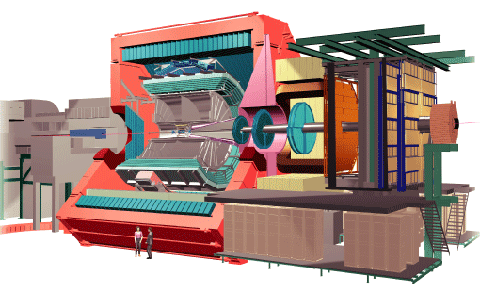Related links
- The ALICE website
This website is no longer maintained. Its content may be obsolete. Please visit http://home.cern for current CERN information.
For the ALICE experiment, the LHC will collide lead ions to recreate the conditions just after the Big Bang under laboratory conditions. The data obtained will allow physicists to study a state of matter known as quark‑gluon plasma, which is believed to have existed soon after the Big Bang.
All ordinary matter in today’s Universe is made up of atoms. Each atom contains a nucleus composed of protons and neutrons, surrounded by a cloud of electrons. Protons and neutrons are in turn made of quarks which are bound together by other particles called gluons. This incredibly strong bond means that isolated quarks have never been found.
Collisions in the LHC will generate temperatures more than 100,000 times hotter than the heart of the Sun. Physicists hope that under these conditions, the protons and neutrons will "melt", freeing the quarks from their bonds with the gluons. This should create a state of matter called quark-gluon plasma, which probably existed just after the Big Bang when the Universe was still extremely hot. The ALICE collaboration plans to study the quark-gluon plasma as it expands and cools, observing how it progressively gives rise to the particles that constitute the matter of our Universe today.
A collaboration of more than 1000 scientists from 105 physics institutes in 30 countries works on the ALICE experiment (November 2011).
